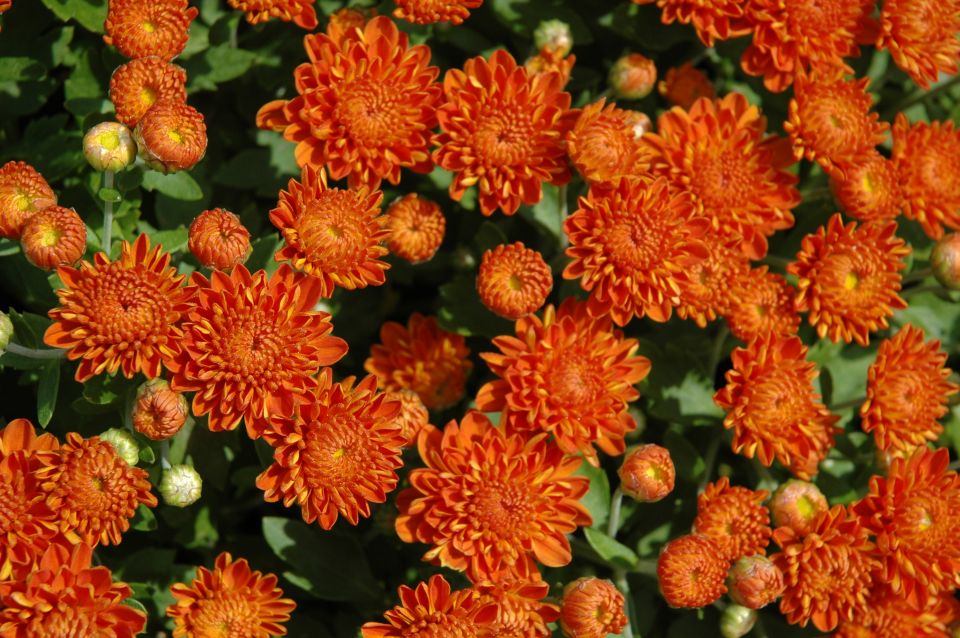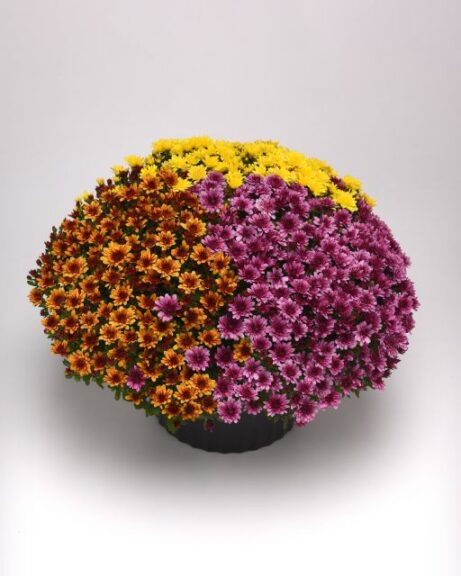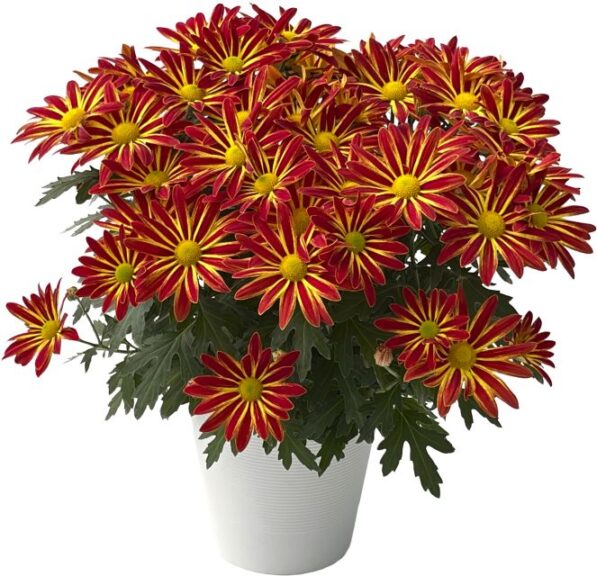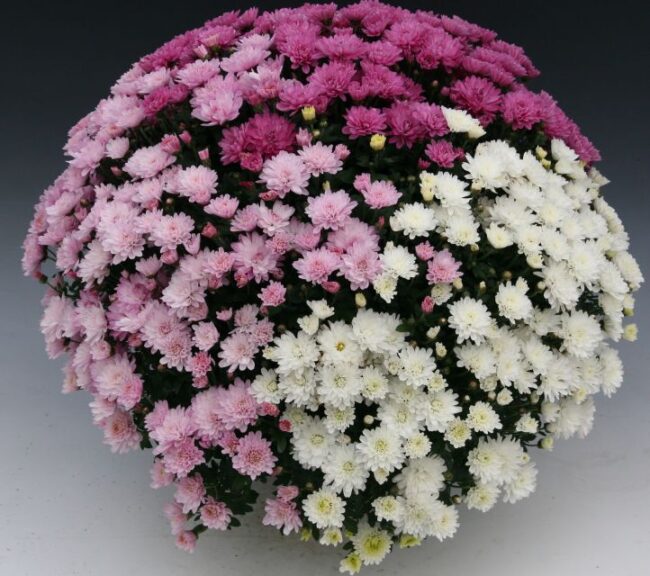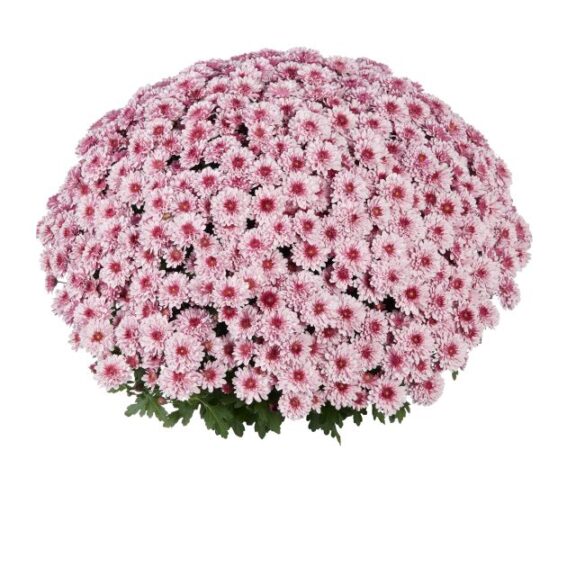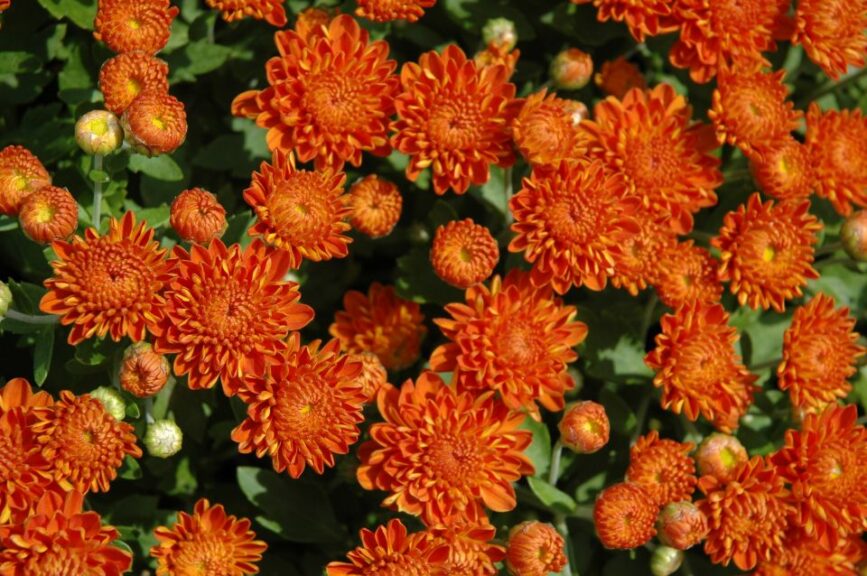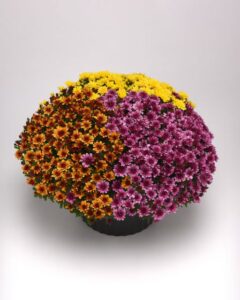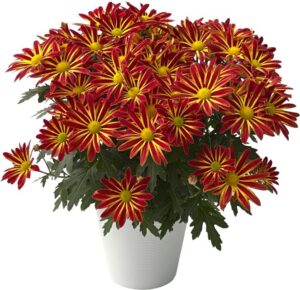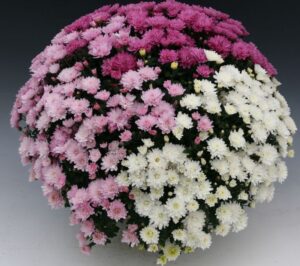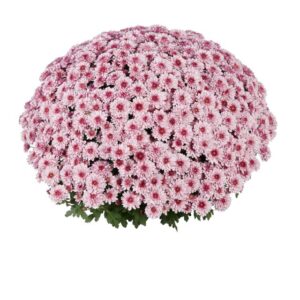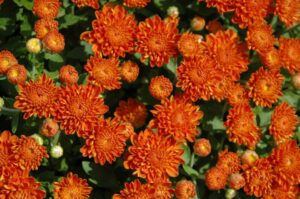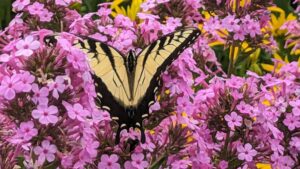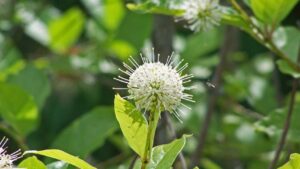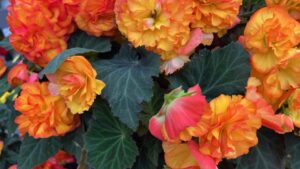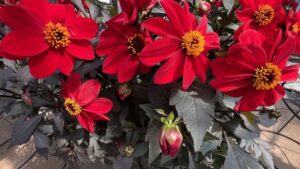How Plant Breeders Are Focusing Research Efforts to Eliminate White Rust in Mums
Growers with a chrysanthemum program regularly treat and scout to prevent white rust infections. Since white rust is quarantinable in North America, breeders have focused their efforts on eliminating this disease. Healthier plants lead to a better season for growers and minimal crop loss.
QiuXia Chen, a Trial Manager at Dümmen Orange, says her team is always making enhancements to disease resistance. There is a significant focus on disease resistance in the company’s breeding program. She says Dümmen Orange works with customers to determine how its assortment can help growers be more productive. By taking direction and feedback from the growers, Dümmen Orange addresses issues that growers face.
“We are constantly working to make enhancements within our mum programs. And disease resistance is at the forefront of our breeding programs at Dümmen Orange,” Chen says. “We are in constant communication with our growers and customers with the problems that hinder their success in their production and utilizing that feedback to shape the direction for our breeding.”
Intrinsa Brings Disease-Resistant Mums
The Intrinsa brand is designed to help growers with common production challenges they face, Chen says, by bringing intrinsic control directly to the plants. Dümmen Orange identified natural resistance to white rust from wild chrysanthemum species and brought the natural resistance into its offerings through traditional breeding techniques and targeted breeding.
In its catalog, the Intrinsa logo means that the mum is resistant to white rust. Intrinsa brings advanced techniques through traditional breeding with the ambition of creating sustainable and economically viable plants for a greener future, Chen says.
“The Intrinsa breeding program from Dümmen Orange has identified the perfect genetic patterns in chrysanthemum DNA for naturally occurring resistance against white rust,” Chen says. “By targeting our breeding with this unique combination of genetics, the Dümmen Orange collection of chrysanthemums offers growers an insurance policy against white rust infections. This is one of the major diseases that we are tackling, and we will continue to bring continued improvement with Dümmen Orange mum genetics.”
Breeders Combat White Rust
Manager of Marketing and Business Development Rob van der Helm and Retail and Product Marketing Manager Nick Nieuwesteeg of Royal Van Zanten say the company is known for its series with a high tolerance against white rust. Its garden mums are offered exclusively in North America through Ball Seed. Royal Van Zanten has bred for white rust-resistant varieties for 15 years, in families such as Morgana, Milkshake, and Skyfall. Van der Helm and Nieuwesteeg say more promising genetics will be introduced at several U.S. trials in coming years.
“We have a dedicated phytopathology team with capabilities to screen and develop resistant genetics,” they say. “As one of the first ornamental breeders, we have this team in-house. We work together with universities and other industry partners to stay ahead of the game to combat white rust in chrysanthemum.”
In addition to white rust, Cindy Drumgool of Ball Mums says Ball also wants to screen out varieties that show disease susceptibility in trials, such as root diseases and bacterial leaf spot.
Brandkamp Sales Manager Jurgen von den Driesch says the company tests all varieties in an independent trial station to determine how sensitive they are to white rust and thrips.
“Some [varieties] are resistant against white rust, while other ones are really sensitive to it. The same goes for susceptibility to thrips,” von den Driesch says. “If it is possible, we don’t use sensitive varieties. We print these test results in our catalog, so the grower knows which varieties are not sensitive to white rust and thrips. This is something the grower finds very helpful.”
Aris Horticulture focuses on hardiness for mums. There are new mum selections in trial now with strong disease resistance, according to Laura Wagner of Must Have Perennials. These will be introduced to the hardy Igloo line, which is bred by Aris.
Multicolor Combinations Are Popular Trend
The breeders agree that bicolor and tricolor programs are popular for mums. A noteworthy consumer trend is mixed pots, von den Driesch says. White and yellow are the top consumer choices, but red, orange, and gold are common, too.
Syngenta Flowers’ Chrysanthemum Technical Lead Mark Smith says growers are looking for ease of growing as skilled labor is hard to find.
“Retailers always like something interesting to talk about but rely on core colors with good shelf appeal for the majority of their sales,” Smith says. “Consumers are doing more in containers and less in the ground in the garden. Some want it all done for them and others want to buy components and put it together themselves. They all want flowers and colors that hold up after they take them home.”
Drumgool of Ball Mums says end consumers are expanding their seasonal front yard decorating, and complementing their mums with hay bales and pumpkins. This has helped grow the variety of sizes available in garden mum production, ranging from 4-inch pots for mixing combos to hanging baskets.




